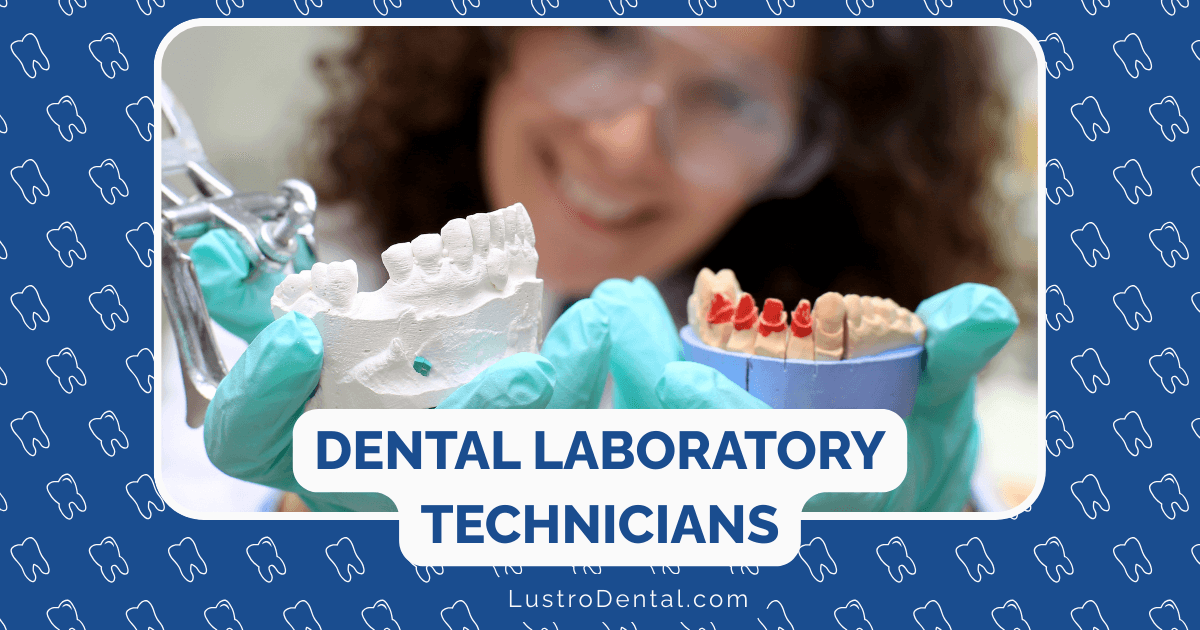Digital vs. Film X-rays: Environmental and Health Benefits

When you sit in the dental chair and that heavy lead apron is draped over you, you might wonder about the radiation exposure from dental X-rays. Or perhaps you’ve never given it much thought. Either way, the technology used to capture those crucial images of your teeth and jaw has evolved significantly over the past few decades—with profound implications for both human health and environmental sustainability.
The shift from traditional film X-rays to digital radiography represents one of the most significant technological advancements in modern dentistry. But what exactly are the differences between these technologies, and why should you care about which one your dentist uses? Let’s explore the environmental and health benefits that make digital X-rays the superior choice for both patients and the planet.
Understanding the Technologies: Film vs. Digital X-rays
Before diving into the benefits, it’s helpful to understand the fundamental differences between these two imaging technologies.
Traditional Film X-rays
Film-based dental radiography has been used for nearly a century and involves:
- Placing a piece of photographic film in the patient’s mouth
- Exposing the film to X-ray radiation
- Chemically processing the film in a darkroom using developer and fixer solutions
- Producing a physical film that must be viewed on a lightbox and stored physically
Dr. Sarah Chen, a practicing dentist for over 20 years, explains: “Traditional film X-rays were the gold standard for decades, but the process is cumbersome, time-consuming, and involves multiple chemicals that pose environmental and health concerns.”
Digital X-rays
Digital radiography, introduced in the 1980s but widely adopted in the 2000s, works by:
- Placing an electronic sensor in the patient’s mouth
- Capturing the X-ray image directly as digital data
- Instantly transferring the image to a computer
- Viewing, enhancing, and storing the image electronically
“The transition to digital was revolutionary,” notes Dr. James Wilson, an environmental dentistry advocate. “It’s comparable to the shift from film cameras to digital photography—with even more significant benefits given the healthcare context.”
Environmental Benefits of Digital X-rays
The environmental advantages of digital radiography are substantial and multifaceted:
1. Elimination of Chemical Processing
Traditional film X-rays require a complex chemical development process that produces hazardous waste:
Chemical Usage in Film Processing
According to the Healthcare Environmental Resource Center, traditional dental X-ray processing typically involves:
- Developer solution: Contains hydroquinone, glutaraldehyde, and other potentially toxic chemicals
- Fixer solution: Contains ammonium thiocyanate, boric anhydride, and silver (3,000-8,000 mg/L)
- Wash water: Becomes contaminated during the rinse process
These chemicals require special handling and disposal as hazardous waste, with used fixer classified as hazardous under the Resource Conservation and Recovery Act (RCRA) due to its high silver content.
Environmental Impact of These Chemicals
The Eco Dentistry Association reports that:
- Chemical fixers from X-ray processes often end up in public sewer systems
- These chemicals can be toxic to aquatic life and disrupt wastewater treatment processes
- Long-term exposure can cause damage to the blood, thyroid, kidneys, and liver
Digital X-rays completely eliminate the need for these chemical processes, preventing this source of environmental contamination.
2. Reduction in Lead Waste
Traditional dental X-rays use lead-lined packets to protect the film from light exposure:
- The Eco Dentistry Association estimates that U.S. dental offices dispose of 48 million lead foils annually
- Lead can remain in topsoil for up to 2,000 years
- It’s readily absorbed by plants and can enter the food system
- Lead is classified as a deadly neurotoxin
Digital sensors don’t require lead packaging, eliminating this source of environmental contamination.
3. Decreased Physical Waste
Film-based X-rays generate substantial physical waste:
- Film packets (plastic, paper, and lead components)
- Chemical containers
- Processing equipment
- Physical storage materials (folders, envelopes, etc.)
Dr. Lisa Chen of Capitol Dental notes: “A busy dental practice might generate hundreds of pounds of X-ray-related waste annually with traditional systems. Digital eliminates virtually all of this waste stream.”
4. Reduced Energy Consumption
Digital systems are generally more energy-efficient:
- No need for darkroom equipment (processors, ventilation systems, etc.)
- Elimination of chemical production and transportation energy costs
- More efficient image capture requiring fewer retakes
A study published in the Journal of the American Dental Association found that digital radiography can reduce the overall energy footprint of dental imaging by up to 40% when accounting for the full lifecycle of materials and processes.
5. Water Conservation
Traditional X-ray processing is water-intensive:
- Film washing requires running water
- Chemical mixing needs water
- Equipment cleaning uses additional water
Digital systems eliminate these water requirements, supporting conservation efforts in dental practices.
Health Benefits of Digital X-rays
The health advantages of digital radiography are equally compelling:
1. Significantly Reduced Radiation Exposure
Perhaps the most important health benefit is the dramatic reduction in radiation exposure:
Radiation Reduction Statistics
Multiple sources, including Stony Brook Dental and Prairie Garden Dental, confirm that:
- Digital X-rays reduce radiation exposure by 80-90% compared to traditional film
- A full-mouth series of digital X-rays exposes patients to approximately 0.005 millisieverts (mSv) of radiation, compared to 0.05 mSv for traditional film
- This reduction is particularly significant for children, pregnant women, and patients requiring frequent imaging
How Digital Sensors Achieve This Reduction
Digital sensors achieve lower radiation doses through:
- Greater sensitivity to X-ray energy
- More efficient image capture technology
- Immediate feedback allowing for instant retakes if needed (without additional preparation)
Dr. Michael Roberts, a radiation safety expert, explains: “The sensors used in digital radiography are far more sensitive than film, requiring just a fraction of the radiation to produce equal or superior diagnostic images.”
2. Enhanced Diagnostic Quality
Digital X-rays don’t just reduce radiation—they improve diagnostic capabilities:
- Higher resolution: Digital sensors capture more detailed images
- Image enhancement: Software allows for adjusting contrast, brightness, and magnification
- Subtle detection: Early-stage cavities and bone loss can be identified more readily
According to Sterling Dental Center, these improvements in image quality lead to earlier detection of dental problems, more accurate diagnoses, and better treatment outcomes.
3. Elimination of Chemical Exposure Risks
The chemicals used in traditional X-ray processing pose health risks to dental staff:
- Developer solution: Contains hydroquinone, which can cause skin irritation and is a suspected carcinogen
- Fixer solution: Contains chemicals that are skin, eye, and respiratory irritants
- Processing fumes: Can cause respiratory issues with long-term exposure
By eliminating these chemicals, digital X-rays create a healthier work environment for dental professionals and reduce occupational health risks.
4. Improved Patient Experience
Digital radiography enhances the overall patient experience in several ways:
- Faster process: No waiting for film development
- More comfortable: Digital sensors typically have rounded edges and comfortable designs
- Educational tool: Images can be immediately shown to patients on a screen
- Reduced anxiety: Shorter procedure time and less radiation exposure
“Patients appreciate seeing their X-rays immediately on screen,” notes Dr. Wilson. “It helps them understand their dental conditions and treatment options, improving communication and treatment acceptance.”
5. Better Long-term Health Monitoring
Digital X-rays offer superior capabilities for monitoring oral health over time:
- Consistent comparison: Digital archives ensure image quality doesn’t degrade over time
- Side-by-side analysis: Software allows easy comparison of current and previous images
- Subtle change detection: Digital enhancement can reveal small changes that might be missed on film
These capabilities support early intervention and preventive care, potentially reducing the need for more invasive treatments later.
Practical Considerations for Dental Practices
While the environmental and health benefits are clear, dental practices considering the switch to digital should be aware of several practical factors:
1. Initial Investment
Digital systems require a significant upfront investment:
- Sensors and image capture equipment
- Computer hardware and monitors
- Specialized software
- Staff training
However, most practices recoup these costs through:
- Reduced ongoing expenses for film and chemicals
- Elimination of darkroom space and equipment
- Increased efficiency and productivity
- Marketing advantage from offering state-of-the-art care
2. Technology Integration
Digital X-rays can integrate with other dental technologies:
- Electronic health records (EHRs)
- Practice management software
- 3D imaging systems (CBCT)
- CAD/CAM systems for restorations
This integration improves workflow efficiency and comprehensive patient care.
3. Staff Training and Adaptation
Transitioning to digital requires training and adaptation:
- Learning new image capture techniques
- Understanding software features and capabilities
- Developing new workflow processes
- Ensuring proper maintenance of equipment
Most dental teams adapt quickly, finding the digital workflow more efficient once established.
The Current State of Adoption
Despite the clear benefits, the transition to digital radiography is still ongoing:
- According to the Eco Dentistry Association, approximately 60% of U.S. dental offices have switched to digital imaging
- Adoption rates are higher in urban areas and among newer practices
- Some older practices continue to use film due to the initial investment cost or resistance to change
Dr. Chen observes: “We’re in a transitional period where digital is clearly the future, but some practices are still catching up. As older dentists retire and equipment needs replacement, we’ll see nearly universal adoption of digital technology.”
Patient Considerations: What to Ask Your Dentist
As a patient, you can advocate for your health and environmental values by asking your dentist about their imaging technology:
Questions to Consider Asking
- “Do you use digital X-rays in your practice?”
- “How do you minimize radiation exposure during imaging?”
- “What environmental practices do you follow for waste management?”
- “How often do you recommend X-rays based on my specific oral health needs?”
If your dentist uses traditional film, you might inquire about their plans to transition to digital technology in the future.
The Future of Dental Imaging
The evolution of dental imaging continues beyond basic digital radiography:
Emerging Technologies
- 3D imaging/CBCT: Provides three-dimensional views with relatively low radiation
- AI-enhanced diagnostics: Artificial intelligence helps identify potential issues
- Handheld X-ray devices: Portable units that further improve patient comfort and convenience
- Radiation-free alternatives: Research into ultrasound and other non-radiation imaging methods
These advancements continue to improve diagnostic capabilities while further reducing environmental impact and radiation exposure.
The Bottom Line
The transition from film to digital X-rays represents a significant advancement in dental care—one that benefits patients, dental professionals, and the environment. Digital radiography reduces radiation exposure by up to 90%, eliminates hazardous chemical waste, improves diagnostic capabilities, and enhances the overall patient experience.
As we become increasingly aware of both health risks and environmental impacts, technologies like digital X-rays demonstrate that better care and sustainability can go hand in hand. Whether you’re a dental professional considering an upgrade or a patient seeking the safest, most environmentally responsible care, understanding these benefits helps inform better decisions.
The next time you’re at the dentist and that sensor is placed in your mouth instead of a film packet, you can appreciate not only the clearer image it will produce but also the reduced radiation exposure and environmental impact it represents—truly a win-win for health and sustainability.
Have you experienced both traditional and digital dental X-rays? What differences did you notice? Share your experience in the comments below.







